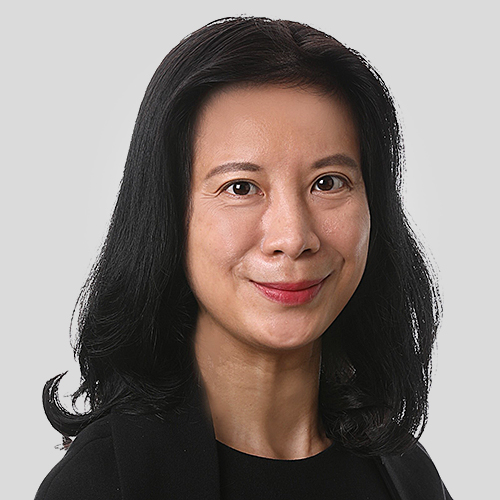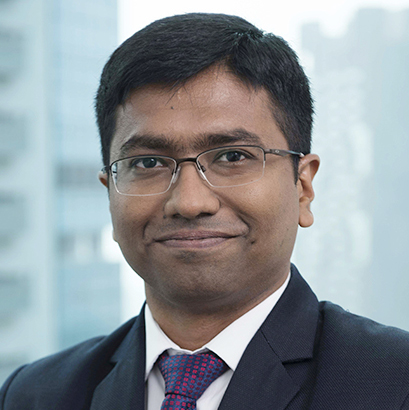IN a year when the International Monetary Fund chief noted that 90% of the world’s economies registered a slowdown and the United States withdrew from the Paris climate agreement, it’s easy to be concerned about the future of sustainable capital markets. However, Asia-Pacific regulators and investors seem undeterred.
The strong advocacy efforts of regional regulators – the Monetary Authority of Singapore’s proactive stance on green finance, the Bank of Thailand’s push for sustainable banking, and the Philippine’s Bangko Sentral’s promotion of inclusive finance, among others – reflect their collective belief that sustainable finance is a necessity, not just a nicety.
Institutional investors and asset owners are increasingly adjusting their asset allocation to include environmental, social, and governance (ESG) principles. “Putting ESG into our portfolio is a fiduciary responsibility,” says Hiromichi Mizuno, chief investment officer of Japan’s Government Pension Investment Fund, the world’s largest with US$1.37 trillion in assets under management.
This year, global sustainable debt issuance has already hit the US$332.4-billion mark, smashing last year’s record of US$247 billion. Asia-Pacific accounts for US$69.4 billion, a 21% share of the 2019 market, including US$61.1 billion in green bonds and about US$8.2 billion in sustainability-linked loans, according to figures by Dealogic, CACIB and BNEF.
“In spite of any headwinds, the sustainable finance market is doing well,” points out Jeff Zhang, CTBC Bank’s global head of debt capital markets, during a panel discussion at the 14th Asia Bond Markets Summit organized by The Asset in association with the Asian Development Bank.
Siong Ooi, MUFG’s managing director and co-head of debt capital markets – loans and bonds – Asian investment banking division, feels that one must look beyond the headlines regarding slowing growth and Sino-US trade tensions, and focus on the macro-environment. “Overall, bond markets have been pretty strong. Volume is up in Asia-Pacific. Liquidity is pretty strong in the bank market.” And sustainable or ESG financing is an attractive defensive asset class, he notes.
Mervyn Tang, senior director and global head of ESG research, sustainable finance, Fitch Ratings, agrees, pointing out that in spite of the headwinds, sustainable finance has a lot going in its favour, in addition to increasing regulatory support. There’s a structural shift, he notes, involving “continual pressure for companies to go greener, reduce carbon intensity, and invest in things like renewable energy”.
The real test for sustainable finance, Ooi feels, is whether corporates are taking it up and it’s spreading to other markets beyond those involving issuers from financial institutions and sovereigns, supranationals and agencies (SSAs). “We are definitely seeing a lot more issuances from different sectors,” he explains. “Green bonds still make up a big part of the [sustainable] market, but the biggest development has come from sustainable loans, which have grown three times.”
In India, for example, a lot of the renewable deals that have historically relied on the banks now access the capital markets. “[And] we’re seeing a whole bunch of issuers move away from traditional financing into ESG financing,” Ooi explains. “Both on the demand and supply side, the overall environment is pretty robust. ESG, as an asset class, is attractive relative to the broader markets.”
David Jenkins, National Australia Bank’s (NAB) head of sustainable finance, corporate and institutional banking, points out that in Australia, where there is no clear national regulatory support, the state governments and corporates are moving ahead with sustainable finance. “In Australia, the lead was taken by the SSAs, followed by the banks, then with continuing development of the local market for green bonds, a number of state governments, securitization issuers and finally, the corporates joined in.”
“We’ve seen a flurry of diverse issues,” Jenkins says. “The depth of investor demand is there.” In addition, infrastructure firms, usually not obvious candidates for green financing, he concedes, see an opportunity to improve their sustainability profile. “That space continues to grow at pace. And I think you’ll see a lot more coming down the pipeline in terms of new issuers, different issuance formats, asset-backed securitization and opportunities to tap into different sectors including the high-yield space – and a lot of growth opportunities.”
“In terms of green bonds, there is definitely more and more interest,” Fitch’s Tang says. “One of the trends in green finance is transition bonds, which involves companies, say in the oil and gas fields, thinking about how they can reduce their carbon intensity.”
In China, one of the world’s largest sustainable finance markets, the general economic slowdown and the trade war have had an effect, but volume has been slowing since 2015 when its issuances hit a high of US$30 billion. This year, China looks set to issue between US$20 billion and US$25 billion in sustainable debt.
China uses a top-heavy approach to scaling the new market, says CTBC’s Zhang, which means they are over-reliant on mega-issuers – state-owned firms, big banks and enterprises – that account for 85% to 90% of the issuances in the country. “There’s the drop in China, and the other problem is the deleveraging campaign since 2017,” Zhang notes, adding that “anything that is no longer the top priority of senior officials can lose steam quite easily”.
In Australia, Jenkins notes that NAB’s treasury team often treats green sustainability-themed issuances as a form of risk mitigation. “In uncertain times with volatile capital markets, we continue to see strong investor demand for new sustainable themed issues, with continuing flow of funds seeking sustainable investment.”
“We’re a huge lender at MUFG in the renewables space in Australia, and it is almost totally being financed on the bank market,” Ooi points out. “Our goal is to introduce more capital markets solutions into the sponsor base in green format.”
There is also active green bond secondary trading. “We see performance in the secondary market in the majority of cases, driven by scarcity of new supply and the wealth of demand,” Jenkins explains.
“The capital flow into the [sustainable] market is driven by real investor demand,” Zhang says. But he feels “it still requires support from governments. And we have seen more governments issuing their own financial instruments – last year in Ireland and Belgium, this year in Chile, Korea, Indonesia. And Hong Kong is also active in the market.”
Zhang also hopes Taiwan, which has issued at least 33 tranches of green bonds since 2016, will continue to offer green bonds.
“Singapore is going to commit US$2 billion to support more green financing,” Ooi adds. “And I see a massive role for governments and regulators to play by creating momentum to mobilize capital into this space.”
Obviously, markets have to stand on their own, Ooi argues, but regulators can help drive the momentum by establishing a consistent framework for sustainable investment and offering incentives.
Central banks are increasingly active in climate risk assessment and financial sustainability, states Tang. But “if there is a fiscal side to this,” he wonders “whether governments will actually start putting public money, on the back of private money, to support some of the risks of these projects. That’s the question of the next decade”.
With increasingly proactive governments and regulators, hungry investors, supportive banks, green-friendly corporates, innovative issuances and positive branding, Asia’s sustainable finance market seems well-set to weather the global headwinds and continue to expand its footprint with action over rhetoric.





.jpg)
.jpg)


